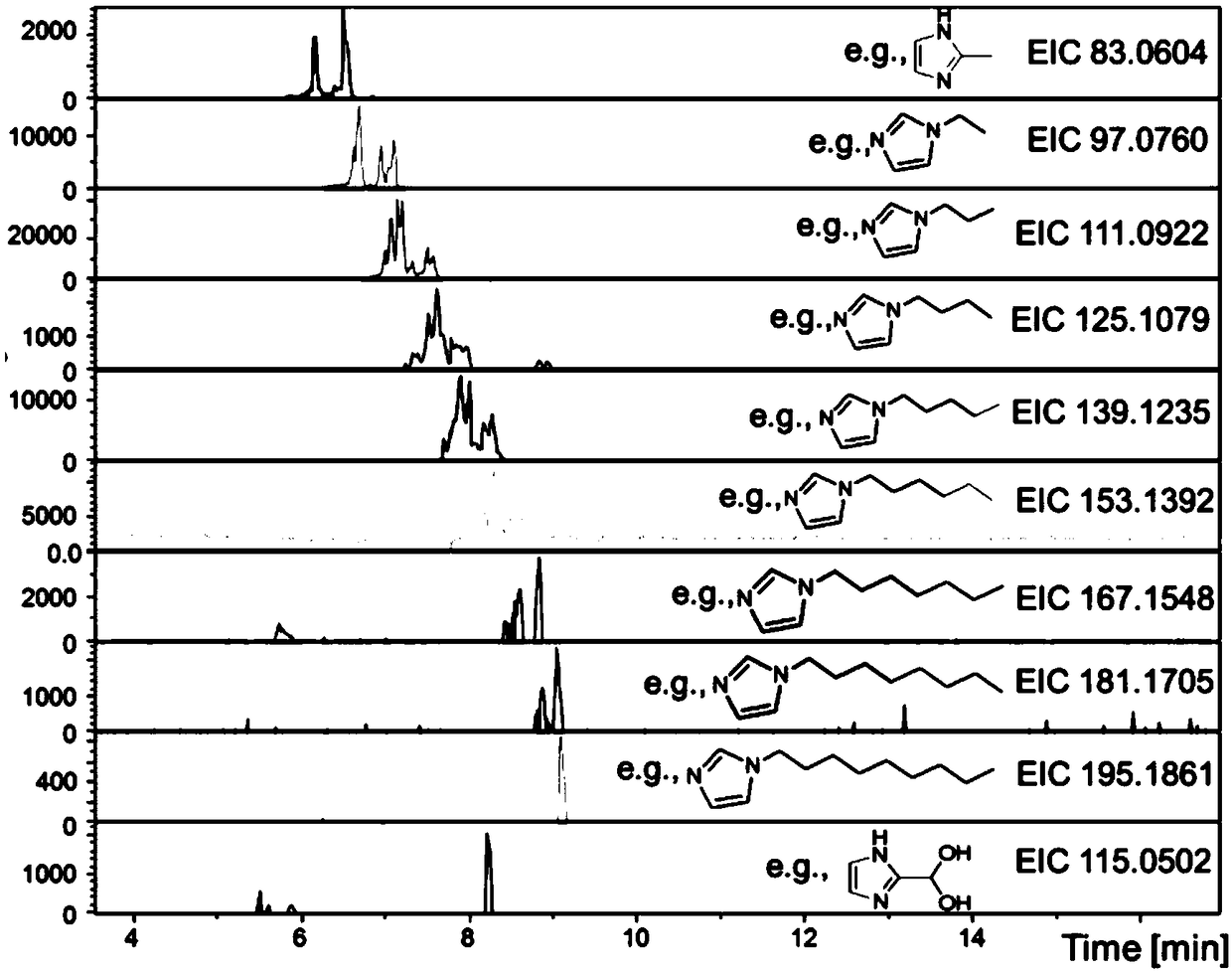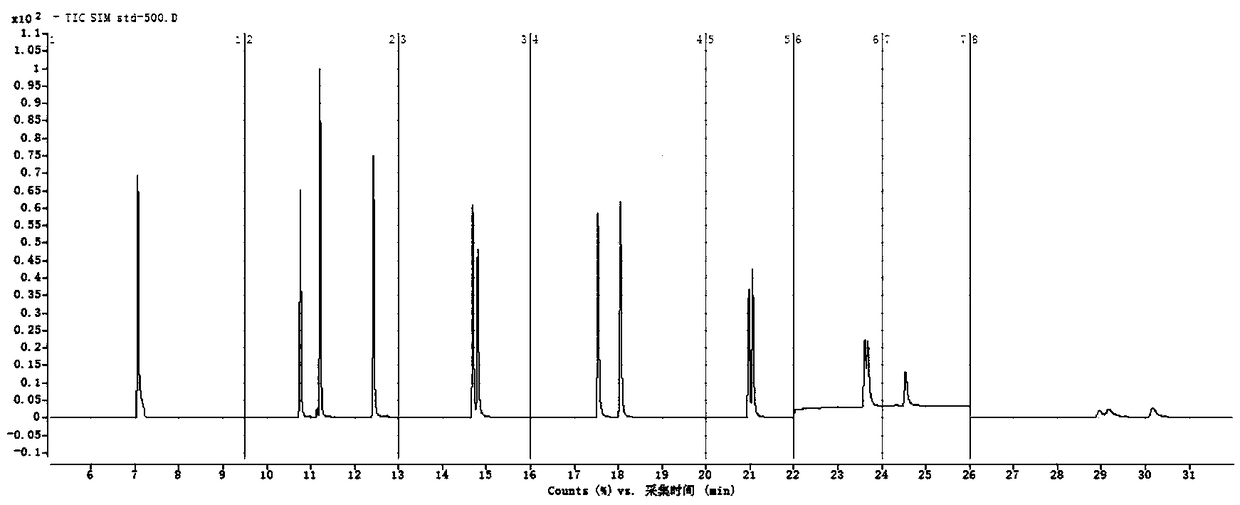Method for determining compound in aerosol brown carbon
An aerosol and compound technology, applied in the field of analytical chemistry, can solve the problems of low separation degree of imidazole compounds, inability to accurately determine components, and unsatisfactory separation effect, etc., to achieve improved detection efficiency, low operation difficulty, and simple and easy-to-obtain reagents Effect
- Summary
- Abstract
- Description
- Claims
- Application Information
AI Technical Summary
Problems solved by technology
Method used
Image
Examples
Embodiment 1
[0033] Sample Collection: Aerosol brown carbon samples were collected with a Teflon membrane.
[0034] Pre-treatment: Dissolve the sample in methanol, ultrasonically oscillate, extract for 30 minutes, then filter with a 0.45 μm filter membrane to remove impurities, and then use nitrogen to purge the filtrate to concentrate, and the concentrated sample is mixed with methanol-water with a volume ratio of 50:50 The mixed solvent was dissolved to form a 200 μl mixed solution.
[0035] Instrumental analysis: inject the mixed solution into capillary electrophoresis through the injection needle for separation, use methanol-water solution as the mobile phase, control the flow rate of the mobile phase to 0.5ml / h, and then enter the quadrupole-time-of-flight tandem mass spectrometer through the series tube, and compare the mixed solution Qualitative and quantitative analysis of compounds.
Embodiment 2
[0037] Sample Collection: Aerosol brown carbon samples were collected with a quartz membrane.
[0038] Pre-treatment: Dissolve the sample in methanol, ultrasonically oscillate, extract for 25 minutes, then filter with a 0.4 μm filter membrane to remove impurities, and then use nitrogen to purge the filtrate to concentrate, and the concentrated sample is mixed with methanol-water with a volume ratio of 50:50 The mixed solvent was dissolved to form a 190 μl mixed solution.
[0039] Instrumental analysis: The mixed solution is injected into capillary electrophoresis through the injection needle for separation, and then enters the quadrupole-time-of-flight tandem mass spectrometer through the series tube, and the compounds in the mixed solution are qualitatively and quantitatively analyzed.
Embodiment 3
[0041] Sample Collection: Aerosol brown carbon samples were collected with a Teflon membrane.
[0042] Pre-treatment: Dissolve the sample in methanol, ultrasonically oscillate, extract for 35 minutes, then filter with a 0.5 μm filter membrane to remove impurities, and then use nitrogen to sweep the filtrate to concentrate, and the concentrated sample is mixed with methanol-water with a volume ratio of 50:50 The mixed solvent was dissolved to form a 210 μl mixed solution.
[0043] Instrumental analysis: The mixed solution is injected into capillary electrophoresis through the injection needle for separation, and then enters the quadrupole-time-of-flight tandem mass spectrometer through the series tube, and the compounds in the mixed solution are qualitatively and quantitatively analyzed.
PUM
 Login to View More
Login to View More Abstract
Description
Claims
Application Information
 Login to View More
Login to View More - R&D
- Intellectual Property
- Life Sciences
- Materials
- Tech Scout
- Unparalleled Data Quality
- Higher Quality Content
- 60% Fewer Hallucinations
Browse by: Latest US Patents, China's latest patents, Technical Efficacy Thesaurus, Application Domain, Technology Topic, Popular Technical Reports.
© 2025 PatSnap. All rights reserved.Legal|Privacy policy|Modern Slavery Act Transparency Statement|Sitemap|About US| Contact US: help@patsnap.com



